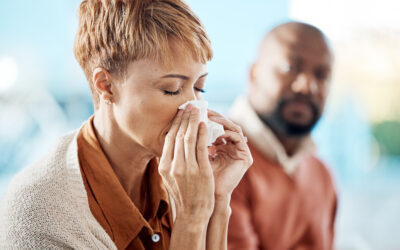Undergoing an allergy skin test can be a straightforward way to get to the bottom of pesky allergies. By identifying what triggers your body's reactions, you can manage symptoms more effectively and...
Blog: Allergy Relief
Quantum Energy for Allergies: Natural Relief Explained
If you’ve been struggling with allergies, you might be searching for a fresh approach to manage their symptoms. We recognize the impact allergies can have on daily life and are enthusiastic about...
Self Care Tips to Get You Through Seasonal Pollen Allergies
Spring is a wonderful time of year, but it can also be a difficult time for those who suffer from seasonal pollen allergies. Pollen allergies are a common problem and can cause a range of...
When Sneezy Meets Dopey: The Brain and Seasonal Allergies
While the changes in season are a welcome sight for many, it can also be the beginning of a miserable time for those who suffer from seasonal allergies. It is well known that seasonal allergies can...
The Differences: A Complete Guide to Pink Eye vs Allergies
Itchy, red, and watery eyes can be uncomfortable and irritating, significantly affecting your daily activities. While the symptoms may appear similar, the causes behind them may differ. Usually,...
All You Need to Know About Allergy Development in Adults
Allergies are a common condition that affects millions of people worldwide. They occur when the immune system overreacts to a substance that is typically harmless, such as pollen, pet dander, or...
Debunking Spring Allergy Myths: Treatment Tips
Spring allergies affect millions of people every year, and they can cause various uncomfortable symptoms, including sneezing, runny nose, and itchy eyes. Unfortunately, many myths and misconceptions...
Allergies in Toddlers: What Parents Need to Know
As parents, it is essential to understand the common allergies that toddlers may experience to provide them with the best possible care. Allergies in toddlers can be challenging to diagnose as their...
How to Keep Seasonal Allergy Symptoms At Bay
Seasonal allergies can be a major headache for many people. Millions of people suffer from seasonal allergies each year, with symptoms anywhere between mild and severe. These allergies are often...
Important Facts About Allergy-Related Fatigue You to Know
Do you find yourself feeling exhausted even after a good night's sleep? Have you ever wondered if your allergies might be to blame? If so, you're not alone. Many people with allergies experience...
















